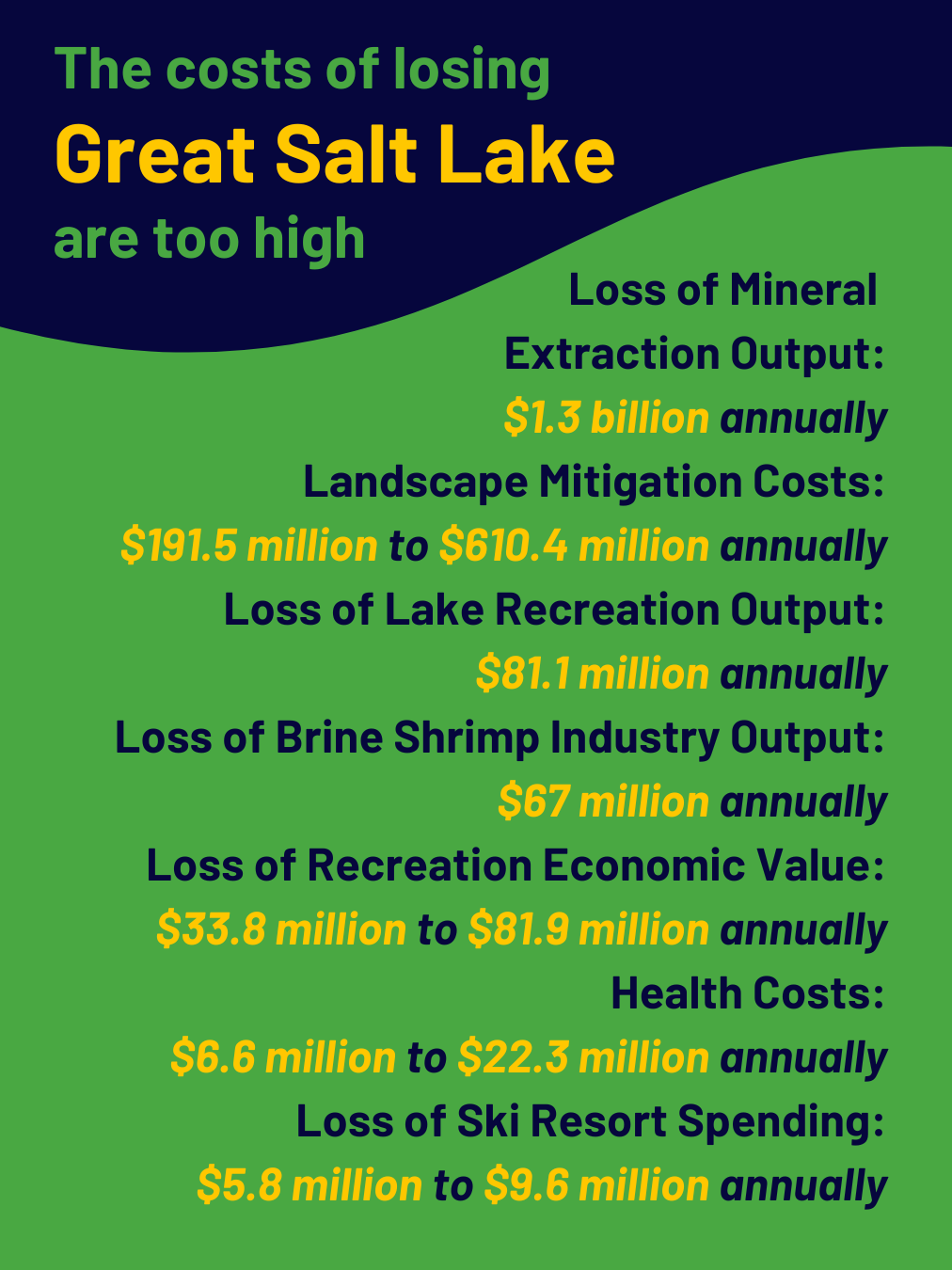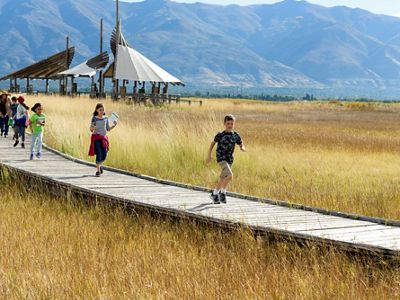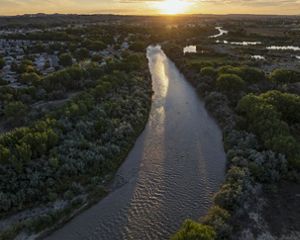Great Salt Lake: TNC’s Role as a Conservation Leader
Since 1984, TNC has been a driving force advancing science, habitat protection and education to benefit Great Salt Lake.
By Larisa Bowen, Writer/Editor for The Nature Conservancy
In 1984, The Nature Conservancy (TNC) took a pioneering step by acquiring 1,192 acres along the eastern shore of the Great Salt Lake, becoming the first private conservation organization to protect critical migratory bird habitat in the area. This landmark action not only safeguarded vital wetlands but also established TNC's Utah chapter, marking the beginning of our enduring commitment to the Lake's preservation.

In the years since, TNC has been a driving force for key advances in science, habitat protection, policy and public education to benefit Great Salt Lake. We are a trusted and science-driven leader. Today, as the Lake and Utah face growing challenges, TNC is working with diverse partners on coordinated, strategic and practical interventions to protect freshwater flows to the Lake and enhance the quality of water in its vital wetland ecosystems.
Our conservation work in the Great Salt Lake watershed is part of TNC's ambitious goal to protect sustainable freshwater sources for people and nature around the world.
Sign up for our monthly newsletter
Be the first to know about conservation updates and opportunities to get involved in your area.
TNC’s Conservation Work
TNC’s Great Salt Lake leadership focuses on three areas:
1. Preserving & Restoring Habitat
Since 1984, TNC has preserved more than 12,000 acres of wetlands and uplands at Great Salt Lake. We now manage 10,000 acres at several preserves, including 4,531 acres at our marquee Great Salt Lake Shorelands Preserve—an oasis for migratory birds that acts as a buffer against rapid development in Davis County.
At all of our protected properties, TNC manages habitat with the goal of benefiting the larger Lake ecosystem. Here are a few examples:
Enhancing and Creating New Wetlands
We have enhanced or created more than 400 new acres of wetlands on our properties, benefitting birds such as white-faced ibis, long-billed curlews and great blue herons. In 2023, TNC collaborated with Equinox Engineering to create 40 new acres of wetlands by building a control structure to divert stormwater runoff into the preserve. The project cleans the incoming runoff and forms a new open freshwater marsh supporting a range of wildlife.

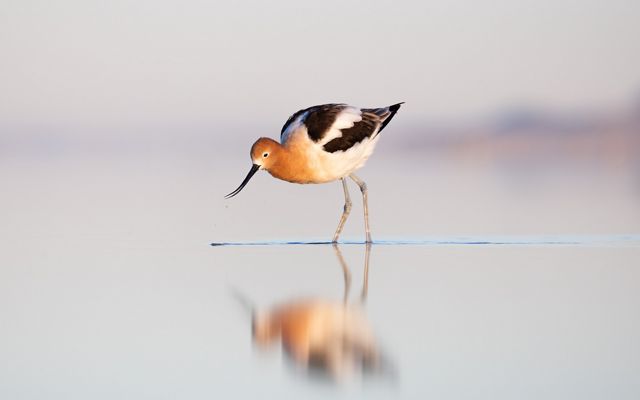
Fighting Invasives
TNC employs innovative methods to combat invasive phragmites—a plant threatening the Lake's ecosystem—using the Marsh Master, a specialized amphibious machine, to remove them. Additionally, we collaborate with local ranchers to implement targeted cattle grazing, promoting the resurgence of native plants.


Preventing Pollution
In partnership with Kaysville City, TNC built three wildlife-friendly wetland basins with trash collection systems to filter stormwater and improve water quality.
TNC preserve managers collaborate with other private, state and federal wetland managers to exchange best practices in water control, herbicide use, deploying equipment and fire management.
“When TNC started buying land along the Lake’s eastern shore in 1984, we were thinking far ahead,” says Chris Brown, TNC Utah’s Director of Stewardship. “Now, as we face expansive development, climate change impacts and water shortages, it’s more important than ever to provide protected, stable wildlife habitat.”

Experience the preserve
Plan a visit and learn more about TNC’s Great Salt Lake Shorelands Preserve.
2. Transforming Policy & Securing Water
TNC is nonpartisan, science-driven and collaborative. We work with policymakers on both sides of the aisle and a broad range of stakeholders to advance public policies that protect nature and improve the well-being of Utah communities. In addition, we collaborate closely with the government entities tasked with responsibly managing Great Salt Lake, including the Department of Natural Resources and the Office of the Great Salt Lake Commissioner. TNC’s Utah State Director, Elizabeth Kitchens, also serves on the Great Salt Lake Advisory Council.
TNC collaborates with Utah leaders to advance legislation enhancing the Lake’s management, funding research, and modernizing water laws to optimize water use and management and protect water quality and quantity. Today, we are focused on testing and implementing voluntary water market solutions and flexible instream flow provisions to benefit Great Salt Lake.

We’re proud to be part of the Great Salt Lake Watershed Enhancement Trust, established in 2022 through the passage of HB 410, which authorized $40 million in state funds to be dedicated to addressing Lake health and elevation. TNC and the National Audubon Society were selected by the state to co-manage this Trust, representing an unprecedented effort by the State to enhance water quantity and quality for the Lake and its wetlands, as well as to protect and restore wetland habitats.
Working collaboratively and coordinating with the State, the Trust has facilitated, provided transaction costs, and/or contributed funding to water transactions that will provide water directly to the Lake in the amount of approximately 64,000 acre-feet on a diversion basis in 2023 and approximately 69,000 acre-feet on a diversion basis in 2024. The Trust has also supported projects to restore 19,000 acres of Lake wetlands.
In 2024, the Trust issued its Five-Year Strategy setting goals for Great Salt Lake water transactions, wetland protections, improving water distribution and leveraging state funding.
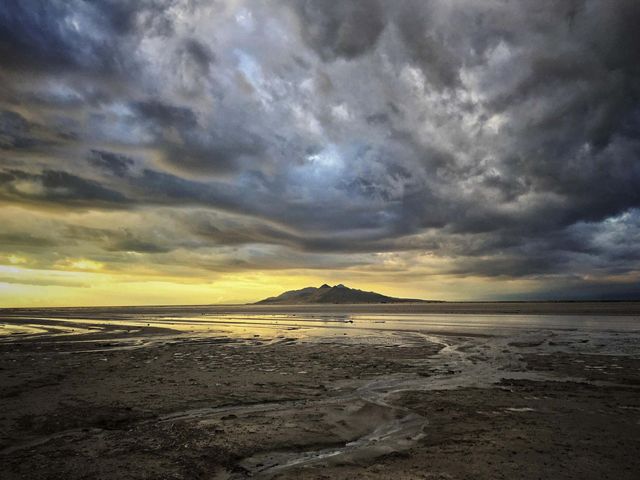
Great Salt Lake Watershed Enhacement Trust
Learn more about the Great Salt Lake Watershed Enhancement Trust.
3. Educating & Inspiring People
The future of Great Salt Lake depends on whether enough people care. TNC has expanded its programs and partnerships to educate the public about the Lake’s immense value.
At our Great Salt Lake Shorelands Preserve, visitors can explore the visitor center with a boardwalk, observation tower, educational displays and bilingual audio tour. Open year-round and free to the public, the Preserve is also home to the Wings & Water Wetlands Education Program, which has taught over 25,000 Utah fourth-graders about the Lake’s ecosystem. TNC’s Nature Lab program recently created a virtual field trip, bringing lessons from the Wings & Water program to students worldwide.
Inspiring the next generation
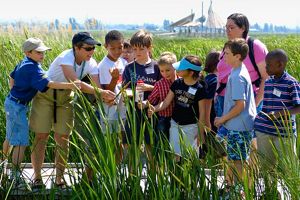




Wings and Water Educational Tour: Educational tour of the Great Salt Lake Shorelands Preserve. © Charles Uibel

UNITED STATES : A girl participates in the City Nature Challenge at the Great Salt Lake Shorelands Preserve. © Andrea Nelson/TNC

Exploring the Great Salt Lake: The Nature Conservancy’s 4,500-acre Great Salt Lake Shorelands Preserve protects habitat and helps students and visitors learn about the lake ecosystem. © Charles Uibel

Wings & Water: Wings and Water students learning about Great Salt Lake wetlands. © Andrea Nelson/TNC
Our preserves also serve as living laboratories for research by scientists and universities on avian habitat, invasive species treatments, and groundwater systems, helping inform future management.
Each spring, thousands tune into TNC’s live kestrel cam for an up-close look at nesting falcons, showcasing the Lake’s rich biodiversity. TNC partners with the community to support birding celebrations, volunteer projects, wildlife tours, and outreach events.

Virtual Field Trip
Watch the Nature Lab video, excellent for people of all ages.
Looking Ahead: TNC’s Commitment
Since 1984, TNC has led efforts to protect Great Salt Lake, safeguarding thousands of acres of wetlands, engaging in broad-based coalitions, advancing key policy changes, and educating thousands of young Utahns. Building on this legacy, TNC is more committed than ever to achieving lasting, meaningful results for the Lake through collaborative leadership and implementing bold yet practical solutions.
Quote: Elizabeth Kitchens
For decades, TNC has led the scientific and community-based approaches needed to protect Great Salt Lake. This is an all-hands-on-deck effort. Each one of us have a role to play in protecting this unique and precious ecosystem, which matters so much to our future.
A Legacy of Protection for Great Salt Lake

TNC restores a key 1-mile stretch of Kay’s Creek—the major source of water for more than 10,000 acres of wetlands and critical bird habitat near the Great Salt Lake.

TNC supports the passage of a suite of historic bills to improve water management for Great Salt Lake and other waterways. Since 2022, UT has continued to make major policy reform for Great Salt Lake.

TNC launches a new project at the Great Salt Lake Shorelands Preserve to divert stormwater into the preserve, cleaning the water and creating vital new wetlands to benefit water birds.
Help us help the Great Salt Lake
Your support drives our work forward, ensuring thriving nature and healthy communities.

